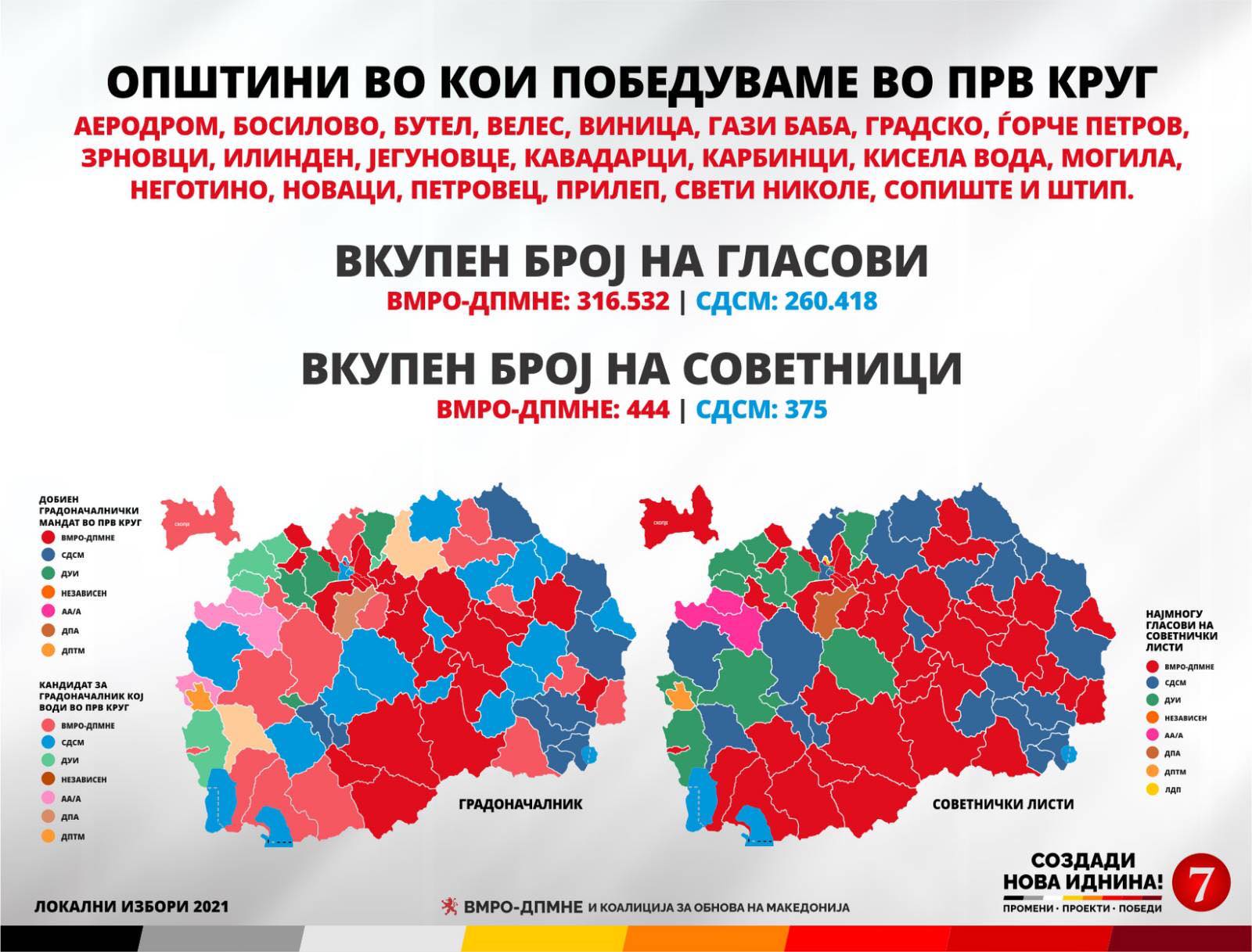Kurir reported on the accumulated results from the two rounds of the local elections, and on the scope of the VMRO-DPMNE victory over SDSM. Their report comes after the SDSM party tried to portray the election as actually a win for the ruling coalition – if you put all their separate vote totals in the same column.
In the end, VMRO-DPMNE won 42 municipal seats and the city of Skopje, while SDSM won only 16, Kurir reports. In the first round, VMRO won the city halls in parts of Skopje like Aerodrom, Gazi Baba, Gjorce Petrov, Kisela Voda and Butel, then major cities like Stip, Veles, Kavadarci and Prilep, smaller cities like Sveti Nikole and Vinica and rural areas like Gradsko, Zrnovci, Ilinden… SDSM won only nine seats in the first round, and only one of them was a major city – Strumica, while several were smaller cities, like Kriva Palanka, Krusevo and Delcevo.
In the second round, VMRO completed the rout of SDSM, winning in Skopje, Bitola, Ohrid and Karpos (through a coalition partner), as well as overturning first round SDSM leads in mid-sized cities like Resen, Kocani, Kratovo for a total of 19 wins.. SDSM won only seven seats in the second round, and only one of them – Skopje’s Centar district, is a major urban center.

In the first round VMRO won a total of 316,532 votes, while SDSM won 260,418 votes. In the local council races, VMRO holds 444 seats, while SDSM – 375. If these were general elections, VMRO would have won 45 seats against 38 for SDSM. The political impact of the local elections is certain to be greater, though, as SDSM depends on a much larger and more fragmented coalition, and any sign that the party will be out of power soon could entice their partners to go their separate ways.
SDSM had near total control over the municipalities after the 2017 elections. Now the situation is reversed, with the map largely VMRO red, with pockets of blue and green for the DUI party. It gets even redder if accounting for the population of the municipalities, given that the VMRO wins were especially dominant in the densely populated urban areas, which generally herald change at the central level.





Comments are closed for this post.